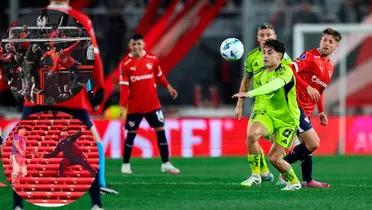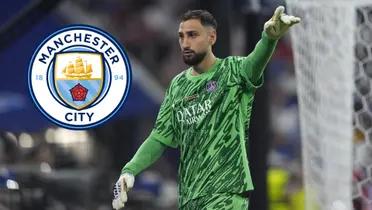What advanced training methods are used in the Premier League for physical preparation?
Explore the advanced training methodologies used in the Premier League for physical preparation.

In the high-stakes arena of the Premier League, physical preparation is paramount, with clubs investing heavily in advanced training methodologies to enhance player performance. This commitment to physical conditioning not only aims to meet the rigorous demands of domestic competitions but also to align with, and often surpass, international standards. Join us as we explore the effectiveness of physical preparation in the Premier League and how it compares to global benchmarks.
Evolution of Physical Preparation in the Premier League
Historical Context
The Premier League has undergone a significant transformation in its approach to physical preparation over the past few decades. In the early 1990s, training regimens were relatively rudimentary, focusing primarily on basic fitness and endurance. However, the influx of foreign managers and players introduced diverse training philosophies, prompting a shift towards more scientific and specialized conditioning programs.

Modern Training Methodologies
Today, Premier League clubs employ a holistic approach to physical preparation, integrating sports science, nutrition, psychology, and individualized training plans. The use of technology, such as GPS tracking and performance analytics, allows for real-time monitoring of player workloads, facilitating tailored training sessions that optimize performance while minimizing injury risks.
Comparative Analysis with International Standards
High-Intensity Running and Sprinting
Studies have highlighted that top-tier players engage in substantial high-intensity activities during matches. Research indicates that international top-class players perform approximately 28% more high-intensity running and 58% more sprinting than their lower-level counterparts. This underscores the necessity for Premier League players to maintain exceptional physical conditioning to meet both domestic and international demands.
Training Load and Positional Demands
Comparative studies between the English Premier League (EPL) and the English Championship League (ECL) reveal that EPL training sessions generally involve greater total distance per minute, high-speed running, and high metabolic load distance. These elevated training demands are reflective of the higher intensity and technical proficiency required at the Premier League level. Additionally, positional analysis shows that center midfielders cover more distance per minute than other positions, highlighting the necessity for position-specific conditioning programs.
Challenges in Physical Preparation
Congested Fixture Schedules
The Premier League's dense fixture schedule poses significant challenges to physical preparation. Teams often play multiple matches within a short timeframe, limiting recovery periods and increasing the risk of injuries. This relentless pace necessitates meticulous load management and recovery strategies to maintain player health and performance.
Injury Incidence
Intensive playing styles and congested schedules have been linked to higher injury rates among Premier League teams. For instance, Tottenham Hotspur experienced a severe injury crisis, with numerous key players sidelined, leading to disappointing performances. Such scenarios highlight the critical need for effective physical preparation and injury prevention protocols.

Innovations in Physical Preparation
Integration of Sports Science
Premier League clubs have embraced sports science to enhance physical preparation. The use of data analytics enables teams to monitor player performance meticulously, allowing for personalized training programs that address individual strengths and weaknesses. This scientific approach ensures that players are conditioned to meet the specific demands of their positions and the team's tactical framework.
Emphasis on Recovery Protocols
Recognizing the importance of recovery in maintaining peak performance, clubs have invested in advanced recovery modalities. Techniques such as cryotherapy, hydrotherapy, and compression therapy are routinely employed to expedite muscle repair and reduce fatigue. Additionally, personalized nutrition plans and sleep management strategies are implemented to support overall player well-being.
Case Studies
Nottingham Forest's Resurgence
In the 1994-95 season, Nottingham Forest's head of performance, Pete Edwards, introduced innovative training methods that played a crucial role in the team's success following their promotion to the Premier League. Edwards implemented personalized training plans, individual diets, and double sessions, drawing knowledge from top Italian clubs. His approach led to improved player fitness and contributed to the team's impressive third-place finish that season.
Everton's Traditional Approach
Under manager Sean Dyche, Everton opted for a more traditional and localized approach to pre-season training, focusing on maximizing training time and limiting travel. This strategy aimed to enhance team fitness and performance by reflecting domestic football challenges more accurately. Despite financial constraints and a congested fixture schedule, the team showed resilience and commitment, underscoring the effectiveness of tailored physical preparation.

The Premier League's commitment to advanced physical preparation has positioned its clubs at the forefront of international football. Through the integration of sports science, individualized training, and innovative recovery protocols, Premier League teams not only meet but often exceed global standards. However, challenges such as congested fixture schedules and injury management require continuous adaptation and investment in player welfare. As the league progresses, maintaining this balance between performance and player health will be crucial in sustaining its competitive edge on the international stage.
What You Should Know About Physical Preparation in the Premier League
- Advanced Training Methodologies: Premier League clubs employ cutting-edge techniques, including GPS tracking and performance analytics, to optimize player conditioning.
- High-Intensity Performance: Players engage in substantial high-intensity activities, with top-class players performing significantly more high-intensity running and sprinting than lower-level counterparts.
- Position-Specific Conditioning: Training programs are tailored to meet the distinct physical demands of each playing position, ensuring optimal performance.
- Challenges of Fixture Congestion: The dense match schedule necessitates meticulous load management and recovery strategies to prevent injuries.
- Innovative Recovery Protocols: Clubs utilize advanced recovery techniques, such as cryotherapy and hydrotherapy, to expedite muscle repair and reduce fatigue.
More news

THE GANG IS HERE! First Argentine Stars Arrive in Buenos Aires for Final Qualifier Push!
01/09/2025

THE LAST DANCE! Lionel Messi Confirms His Final World Cup Qualifier in Argentina!
29/08/2025

TRANSFER COLLAPSES! Julio Enciso Fails Medical Exams, Returns to Brighton!
27/08/2025

Vini doesn't feel entirely comfortable at Real Madrid anymore and is seeking a future at another club
26/08/2025

HERE WE GO! Piero Hincapié Says YES to Arsenal, Club Prepares Final Bid for Leverkusen Star!
26/08/2025

THE REAL MADRID SHOWDOWN: Nico Paz's Future Sparks a Bidding War Across Europe!
25/08/2025

SOUTH AMERICAN SHAME: Independiente vs. U. de Chile Match Canceled After Horrific Incidents!
21/08/2025

Rodrygo Benched by Xabi Alonso: The End of an Era at Real Madrid?
20/08/2025

PARIS IN PARIS! The New Superclub, Paris FC, Rises to Threaten PSG-Marseille Rivalry!
20/08/2025

PSG’s €850M Budget is 30x Larger Than the Smallest in Ligue 1!
19/08/2025

THE DEBUTS ARE HERE! Estupiñán & Modrić Step Onto the San Siro Stage!
18/08/2025

CONTROVERSY IGNITES! Barcelona Opens Season with a Contested 2-0 Victory Over Mallorca!
18/08/2025

SCANDAL ESCALATES: Donnarumma's Harsh Letter Responds to Luis Enrique's Super Cup Snub!
15/08/2025

Franco Mastantuono: A New Number 30 for Real Madrid with a Nod to the Past
14/08/2025

HISTORY MADE! PSG Wins First-Ever Super Cup Title in Thrilling Penalty Shootout!
14/08/2025

Mastantuono Arrives at Valdebebas for Real Madrid Presentation
13/08/2025

ON AND OFF THE PITCH: Is Nicki Nicole the New WAG of Barcelona's Lamine Yamal?
13/08/2025

Donnarumma Bids Farewell to Paris Saint-Germain at the Peak of His Career
13/08/2025



